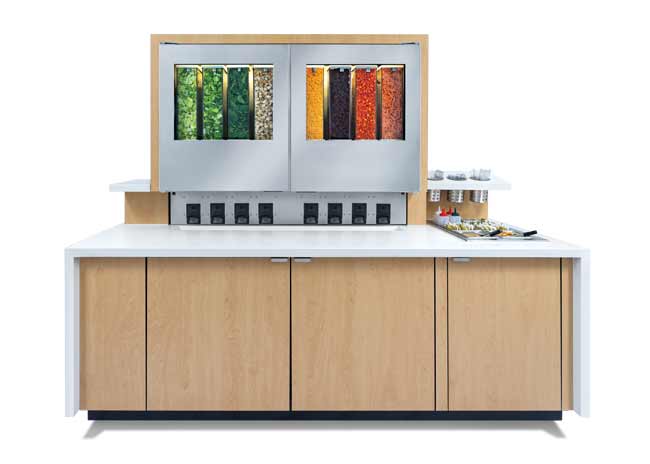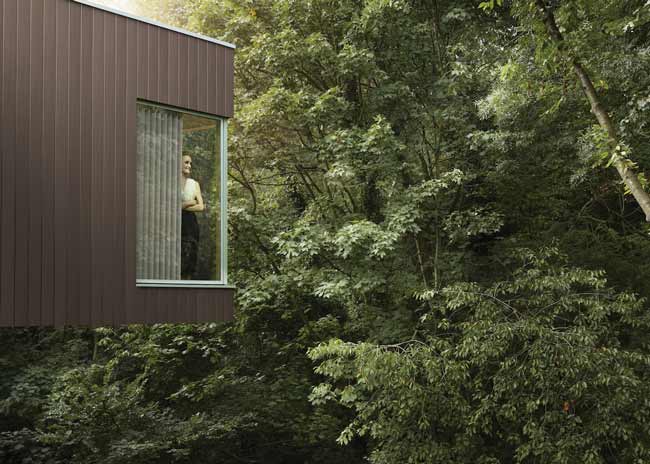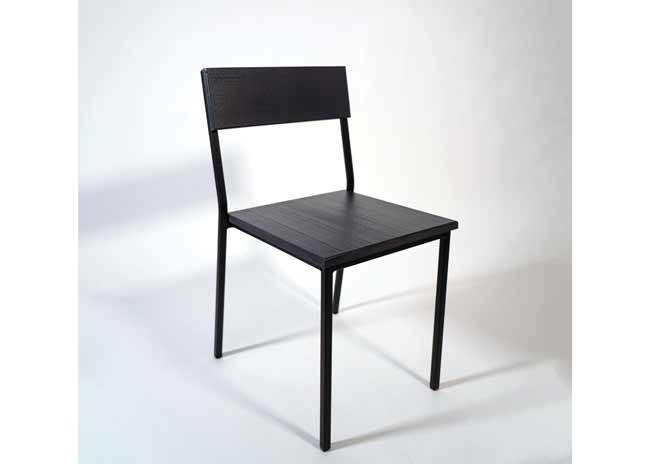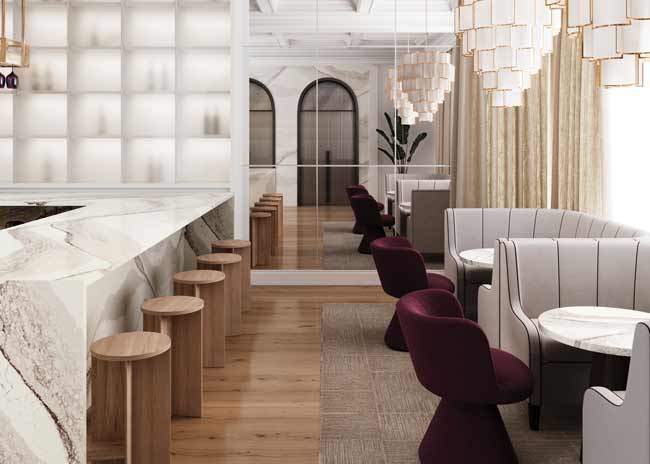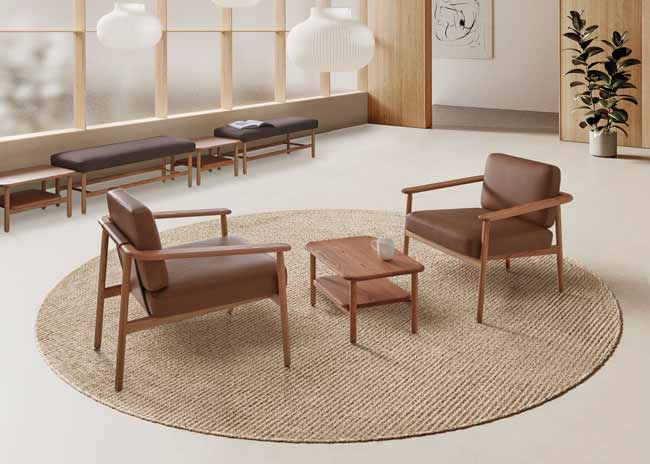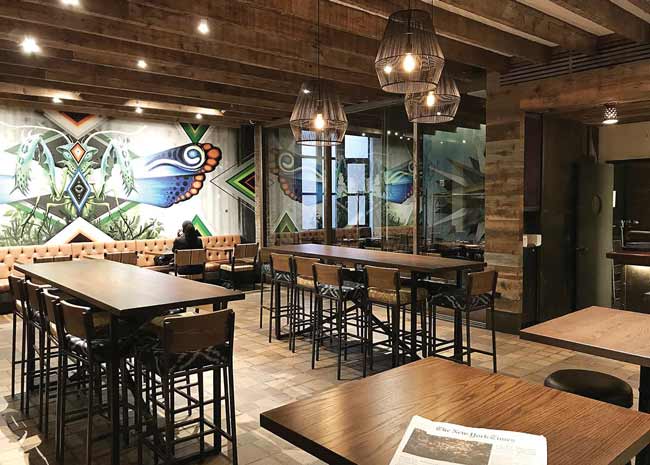Like menus, service and overall decor, restaurant furniture should reflect the design and functional goals of the venue. With chairs, it’s the upholstery, frame material, seat size, weight and design that contribute not only to customer comfort but also to the overall dining experience.
Like menus, service and overall decor, restaurant furniture should reflect the design and functional goals of the venue. With chairs, it’s the upholstery, frame material, seat size, weight and design that contribute not only to customer comfort but also to the overall dining experience.
Because the front of the house is a profit center, maximizing the number of seats per square foot is critical. After designers carve out circulation space for service areas and compliance with fire codes, chairs are placed at tables with efficiency at top of mind. The number of seats per square foot is usually dependent on the level of service. In fine dining, seats are arranged to create intimate settings, but in the case of quick serve and fast casual, maximizing available space is generally a top concern, depending on what percentage of the restaurant’s business comes from takeout. Broadly speaking, corners are generally reserved for booths and larger tables.
Higher chair backs are not only more comfortable than lower-backed chairs, they also add a measure of intimacy and privacy.
Design and Trends
A chair’s design reflects the concept and expected length of stay. Comfort is not as much a factor in quick-service or fast-casual concepts as it is with fine dining. Service style narrows down necessary chair attributes. For fine dining, where expectations are higher and table turnover is lower, upholstered seats are warranted. These chairs are typically a heavier weight and made with pricier materials, suitable for longer dining periods and higher check averages.
In quick-service and fast-casual spaces, durability and cleanability are paramount. Stackability for storage may also be a factor with this seating. Fine-dining patrons typically expect more distance between tables than do casual-restaurant diners, allowing for larger chairs that take up more space.
Many concepts are going with minimalistic seating that incorporates chairs with simple wood frame designs. More upscale restaurants are implementing plush upholstered chairs and barstools with brass nailhead accents or luxurious fabrics.
There are a wide range of chair designs geared for restaurants.
Armchairs or captain’s chairs are designated for fine-dining and higher-end spaces. The same is true for Parsons chairs, which have upholstered seats and backs. Mission-style or Shaker chairs are simple with clean lines and distinguished by seatbacks of thin wood slats running vertically and framed by thicker wood. Ladderback chairs feature wooden horizontal slats on the back. Windsor chairs, made popular in England and often used in cafes, have a bowed back framing spindles that make up the back and legs. French bistro chairs, constructed of woven rattan and wood, can also incorporate colors that match decor. Banquet chairs come in all shapes, sizes and materials and are lightweight, durable and stackable.
One of the most perennially popular chair types used in commercial dining is bentwood. Lighter in weight, these chairs are constructed from soaked or steamed wood that is bent into shapes before hardening. Backs may be curved or straight with a cross-back or X pattern. Popular in casual concepts, this furniture became fashionable in the 19th century, but its modern design has remained timeless and adaptable to any decor. Designers and operators appreciate bentwood’s smaller footprint, which adds to the chair’s flexibility in creating a table of four or six in the same amount of space.
Some seating arrangements lend themselves to specific concepts. For example, those focusing on the environment can incorporate seating with a local/sustainable theme constructed of reclaimed wood or recycled materials. If intimacy is the goal, benches and booths can substitute for chairs and tables.
Sizing and Functionality
A restaurant’s concept, floor plan, seating requirements and table spacing determine the chair’s dimensions.
The floor plan determines the number of chairs needed, and designers recommend increasing this number by 5% on average for extra stock, depending on the operator and available storage space.
Widths and heights should fit the space as well as the table clearance. Size determines how many chairs tables can accommodate as well as where the chair lands in relation to the table legs or base. Chairs should be able to be pulled all the way under the table, and arms should clear the top.
Higher chair backs are not only more comfortable than lower-backed chairs, they also add a measure of intimacy and privacy. This style is best in spaces with higher ceilings, which makes the design more proportional to the room.
In a bar setting, stool height in relation to high-top tables and the bar itself is the first consideration. Swivel stool tops encourage customer interaction and make exiting the seat easier.
Community seating — with long tables like those popular in food halls — has become more popular in recent years. Spacing is less of a factor in those settings.
Materials and Durability
Chair durability impacts not only its service life but also its overall appearance.
Frames are typically constructed of wood, steel or aluminum. There are benefits and challenges with each type. Steel and aluminum have a longer service life than wood but may not be a fit for all designs, as it is more contemporary in style. Metal frames can also be wrapped in wood or designed with a wood-like appearance. Wood offers color variations and can be complemented with metal accents for a custom appearance.
Chair bottoms in quick-service and fast-casual restaurants are most likely wood, metal or vinyl for added durability and easy, quick cleaning. Fine-dining chairs incorporate more signature upholstery, such as leather or fabric in the chair seat and back. Popular patterns include stripes and corduroy. Midcentury modern styles and ’80s rattan with a wood frame and brass accents are also in vogue. Upholstered chair arms are not commonplace as these serve as crumb catchers and require more upkeep. Fabric may include a stain-resistant treatment for added protection.
Glides and Floor Protection
Glides, affixed on chair leg bottoms for easier movement and sound protection, are generally dictated by the restaurant’s flooring. These discs can be made of metal, plastic, vinyl or felt. Chairs used on carpet have more leeway as scratching is not an issue. However, wood floors require glides for added protection from damage. Metal glides are best used with laminate floors as food is more likely to get stuck on vinyl. Glide replacement should be considered as some discs are hammered into chair legs while others are glued. Flooring manufacturers can provide glide recommendations as well.
Outdoor Chairs
For outdoor chairs, seat and back pads typically have exterior-grade fabric and are detachable for storage in inclement weather. Darker fabric is not recommended for chairs used in direct sunlight as it can fade. Securing chairs and seating components can be critical in high wind situations. In addition, stacking is important for storage during off-hours or winter. Since security is an issue with outdoor seating, a locked storage area or chain lock should be considered. The style of outdoor seating should reflect and be compatible with the indoor dining experience.
Price Point and Lead Times
Budget and ordering times come into play as chairs are nonnegotiable for a restaurant to operate. In a fast-casual space, where chairs may need to be replaced sooner due to heavy use, a lower price point makes more sense. With fine-dining chairs, the higher cost and needed materials may require longer lead times for orders and reorders. Lead time can be as little as six weeks or as long as five months, and stocking can be an issue. It’s best to have extra chairs on hand, and the amount depends on available storage space.
Cleaning and Maintenance
Although chair manufacturers provide cleaning instructions, most types of chairs require wiping down with a wet cloth. Fabrics may need replacing with heavy use, and unlike metal, wood needs patching or refinishing after many years in service. Fabric care depends on the material. Use of sprayed bleach should be avoided as it can damage upholstered fabric and break down wood.
Chairs reflect the concept, are a big part of the first impression and contribute greatly to a customer’s overall experience. With so many options available, there is no reason to sacrifice style, comfort or relevance, regardless of the furniture budget. +



